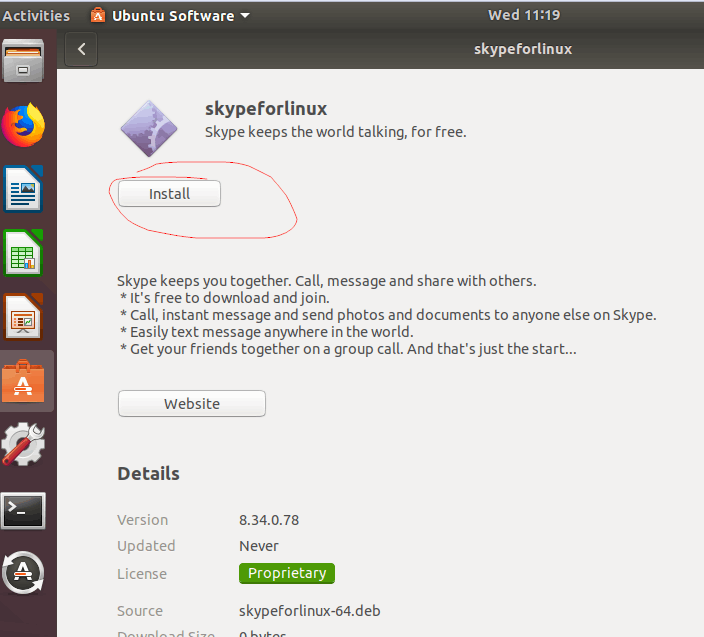

Their user-friendly interface makes it easy to install, manage, and upgrade packages as shown. Using a Graphical Package ManagerĪ Graphical Package Manager is an ideal alternative to install Deb files on Ubuntu and Debian-based systems. List Installed Package Using apt Command 3. Once installed, you can confirm the installed version of the '.deb' software package using the apt command. To install a '.deb' file using ‘apt’, implement the following command: $ sudo apt install. Also, '.deb' packages installed via this approach are automatically upgraded during the next system update. This approach of installing a '.deb' file automatically caters to the download and installation of missing dependencies. The apt command is effective in managing packages (install, upgrade, and remove) since it is the default package manager. $ sudo dpkg-query -l google-chrome-stableĬheck Installed Package in Ubuntu 2.

The following script Downloads all Found Dependencies, Excluding not Found ones: #!/bin/bashĪpt download $(apt-rdepends $1 | grep -v "^ ") 2> error.Once installed, you can confirm the installed version of the ‘.deb’ software package using the dpkg-query command.

You get the list of links in downloads.listĬheck the list, go to your folder and run the list: $ cd yourpathToYourFolderĪll your required packages are in: $ ls yourpathToYourFolderĬomplementing and automating the exclusion of ALL conflictive dependencies (dependencies not found) by the command given by download $(apt-rdepends |grep -v "^ " |grep -v "^conflictiv-dependency$")Īt least for Ubuntu, where the Error Message format is as follows:Į: Can't select candidate version from package as it has no candidate $ sudo apt-get -print-uris -yes -d -reinstall install yourpackage $(apt-cache depends yourpackage | grep "Hängt ab von:" | sed 's/ Hängt ab von://' | sed ':a N $!ba s/\n//g') | grep ^\' | cut -d\' -f2 >downloads.list This text is used twice in this command, if you want to adapt it to your language take care of this! $ sudo apt-get -print-uris -yes -d -reinstall install yourpackage $(apt-cache depends yourpackage | grep " Depends:" | sed 's/ Depends://' | sed ':a N $!ba s/\n//g') | grep ^\' | cut -d\' -f2 >downloads.list You have to change the term " yourpackage" to your wish twice in this command, take care of this! On an englisch system you get: $ apt-cache depends yourpackage

I used apt-cache depends package to get all required packages in any case if the are already installed on system or not.īecause the command apt-cache works different, depending on language, you have to try this command on your system and adapt the command.


 0 kommentar(er)
0 kommentar(er)
